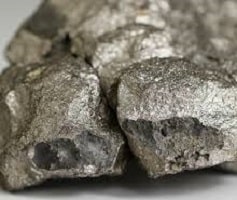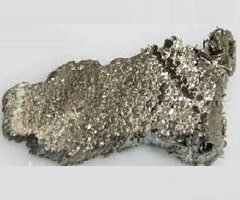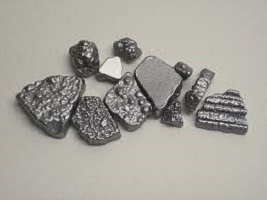We elaborate the uses of oxygen and atomic properties with characteristics. Oxygen is a colorless-looking chemical element with atomic number 8. Its symbol is O and it belongs to the group of nonmetals and its usual state in nature is gaseous. Oxygen is located at position 8 on the periodic table.
You Can Visit Our Managed: Periodic Table Main Page
On this page you can discover the chemical properties of oxygen and information about oxygen and other elements on the periodic table such as sulfur, nitrogen, fluorine or helium. You will also learn what oxygen is for and you will know what its uses are through its properties associated with oxygen such as its atomic number or the usual state in which oxygen can be found.
You will see qualities of oxygen such as its melting and boiling point, its magnetic properties or what its chemical symbol is. In addition, here you will find information about its atomic properties such as the distribution of electrons in oxygen atoms and other properties.
For some elements, some of this information is unknown. In these cases we show the properties attributed to them.
Properties of oxygen
One of the properties of non-metal elements such as oxygen is for example that non-metal elements are poor conductors of heat and electricity. Oxygen, like the other non-metal elements, has no luster. Due to their brittleness, nonmetals such as oxygen cannot be flattened to form sheets or stretched to become threads.
The state of oxygen in its natural form is gaseous (paramagnetic). Oxygen is a colorless looking chemical element and belongs to the group of nonmetals. The atomic number of oxygen is 8. The chemical symbol for oxygen is O. The melting point of oxygen is 50.35 degrees Kelvin or -221.8 degrees Celsius or degrees Celsius. The boiling point of oxygen is 90.18 degrees Kelvin or -181.97 degrees Celsius or degrees Celsius.
Uses of oxygen
Oxygen is an important chemical element that it is. Colorless, odorless and tasteless. If you’ve ever wondered what oxygen is for , here is a list of its possible uses:
- Obviously, oxygen is important for human respiration. Therefore, oxygen therapy is used for people who have difficulty breathing due to a medical condition (such as emphysema or pneumonia).
- Gaseous oxygen is poisonous to bacteria that cause gangrene. Therefore, it is used to kill them.
- Carbon monoxide poisoning is treated with oxygen gas.
- High purity oxygen is used in space suits so that astronauts can breathe. Dive tanks also contain oxygen, although it is usually mixed with normal air.
- Airplanes and submarines also have oxygen cylinders (for emergencies).
- Oxygen is used in the production of polyester polymers and antifreezes. Polymers are used to make plastic and fabrics.
- Rockets use oxygen to burn liquid fuel and generate lift.
- Most commercially produced oxygen is used to convert the ore iron steel.
- Scientists use the ratio of two isotopes of oxygen (oxygen-18 and oxygen-16) in skeletons to investigate the climate of thousands of years ago.
- Pure oxygen is used to ensure complete combustion of the chemicals.
- Oxygen is used to treat water , and also to cut and weld metals.
Atomic properties of oxygen
The atomic mass of an element is determined by the total mass of neutrons and protons that can be found in a single atom belonging to this element. As for the position where to find oxygen within the periodic table of the elements, oxygen is in group 16 and period 2. Oxygen has an atomic mass of 15,9994 u.
The electronic configuration for oxygen is 1s22s22p4. The electronic configuration of the elements, determines the form in which the electrons are structured in the atoms of an element. The atomic radius or Bohr radius of oxygen is 60 (48) pm (Bohr radius) pm, its covalent radius is 73 pm, and its Van der Waals radius is 152 pm.
You Can Visit Our Managed: Periodic Table Main Page
Oxygen characteristics
Below you can see a table showing the main characteristics of oxygen.
| Oxygen | ||
|---|---|---|
| Chemical symbol | OR | |
| Atomic number | 8 | |
| Group | 16 | |
| Period | 2 | |
| Appearance | colorless | |
| Block | p | |
| Density | 1,429 kg / m3 | |
| Atomic mass | 15,994 u | |
| Atomic radio | 60 (48) pm (Bohr Radio) | |
| Covalent radius | 73 pm | |
| Van der Waals radio | 152 pm | |
| Electronic configuration | 1s22s22p4 | |
| Oxidation states | -2, -1 (neutral) | |
| Crystal structure | cubic | |
| State | gaseous | |
| Melting point | 50.35 K | |
| Boiling point | 90.18 K | |
| Heat of fusion | 0.22259 kJ / mol | |
| Molar volume | 17.36 × 10-3m3 / mol | |
| Electronegativity | 3.44 | |
| Specific heat | 920 J / (K · kg) | |
| Thermal conductivity | 0.026 74 W / (K · m) | |
You Can Visit Our Managed: Periodic Table Main Page





